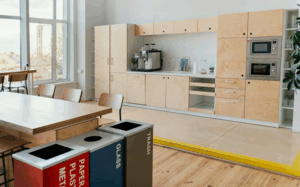7 Planning Tips for a Modular Kitchen Cabinet in Singapore

A modular kitchen cabinet brings order to busy cooking spaces by standardising sizes, streamlining installation, and allowing upgrades over time. Choosing well requires more than colour matching. You need to plan storage, airflow, and daily workflow so the room feels calm and efficient. If you are comparing options for a kitchen cabinet in Singapore, use the tips below to balance space, budget, and durability while protecting day-to-day comfort for every cook at home.
1. Map Routines Before You Map Cabinets
Start with the way you cook, clean, and host. Place preparation zones near the sink, keep pans beside the hob, and allocate a drawer for daily tools within one arm’s reach. A modular kitchen cabinet system should mirror these patterns with deep drawers for heavy items and full extension runners for visibility. When the plan follows real movement, you save steps, protect posture, and the room feels larger and calmer right away.
2. Measure Structure, Not Only Footprint
Check wall straightness, floor level, and service points before finalising any design. Record heights of windows, switches, and pipes that may interrupt runs. In a kitchen cabinet in Singapore, an uneven floor can cause doors to rub and drawers to drift open. Level legs, plumb end panels, and adjustable hinges protect alignment, so the system opens cleanly year after year. Accurate measurements prevent filler strips from multiplying and reduce costly on-site changes.
3. Choose Carcasses That Suit The Humidity
Humidity challenges inferior boards and soft glues. Specify moisture-resistant cores, sealed edges, and rigid cabinet backs that resist warping. Steel or high-grade plywood bodies raise longevity when ventilation is limited. A modular kitchen cabinet with these fundamentals tolerates mopping, steam, and warm air from appliances far better than a light, low-cost option that softens in a season. Durable carcasses keep doors square and runners smooth, which makes cleaning faster too.
4. Prioritise Drawers And Full-Height Pull-Outs
Drawers place items at eye level and reduce crouching. Use deep drawers for pots and small ones for utensils and spices. Full-height pull-outs near the hob keep oils and condiments at hand without cluttering counters. In a compact kitchen cabinet in Singapore, swapping two fixed shelves for one set of drawers can double usable capacity and speed up chores. Visibility cuts duplicate buying and turns storage into a tidy, reliable workflow every day.
5. Ventilate Appliances And Protect Corners
Ovens, dishwashers, and hobs need breathing room. Follow manufacturer clearances and add heat shields where necessary. Keep corners generous so doors and handles never clash. Where two tall units meet, set a filler panel to prevent pinch points. A modular kitchen cabinet layout that respects airflow keeps fronts cool and prevents swollen edges and peeling films. Proper gaps also reduce humming from cramped appliances and make routine servicing easier for technicians when access is tight.
6. Pick Worktops And Fronts For Real Maintenance
Shiny finishes look crisp on day one but may show prints and scratches. Mid sheen laminates or enamelled surfaces hide smudges and clean quickly. Pair durable fronts with worktops that resist heat and cuts. For a kitchen cabinet in Singapore, confirm that installers seal cut-outs and joints against moisture. Careful finishing stops water from creeping into edges and swelling cores. Choose handles that fit your grip and wipe easily, and avoid profiles that trap crumbs and oil.
7. Plan Lighting, Sockets, And Aftercare
Under-cabinet lighting brightens preparation zones and protects eyes. Place sockets where appliances will live and keep switches accessible. Ask for a written care guide that covers hinge tightening, runner cleaning, and surface washing. A modular kitchen cabinet is an investment that rewards light upkeep. Schedule a six-month check to adjust doors and confirm seal integrity around sinks and hobs. Keep spare touch-up paint or enamel patches so small scuffs never become distractions.
Conclusion
A thoughtful specification turns cabinets into a supportive workspace. Begin with routines, measure the room precisely, and choose bodies that handle humidity without fuss. Add drawers and pull-outs that bring contents into view, ventilate hot zones, and select finishes that clean easily. When you set lighting and sockets deliberately and keep hardware tuned, the system works smoothly for years. With these steps, a modular kitchen cabinet and a well-planned kitchen cabinet in Singapore will serve for years.
Contact CAN’S Singapore to map your routines, compare carcass materials, and build a modular kitchen cabinet plan that fits your space, habits, and budget.








